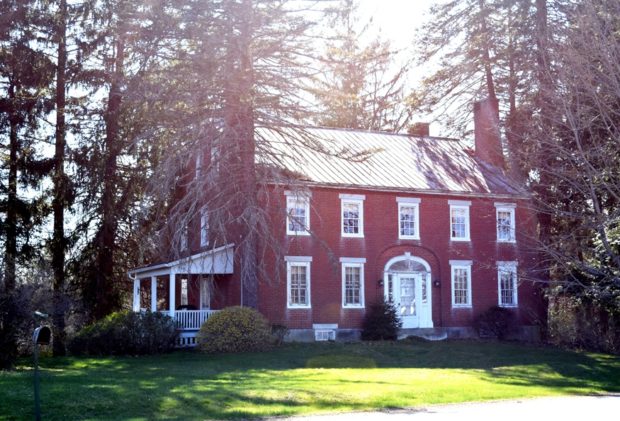Crawford

in Washington County, incorporated 1828, is located on Maine Route 9, following the tracks of the old Airline Stage Route. Crawford Lake occupies the center of the town, an attraction for fishing and recreation. See photos.
"Those seeking cold, hard statistics on Maine communities won't be disappointed." —Bangor Daily News



in Washington County, incorporated 1828, is located on Maine Route 9, following the tracks of the old Airline Stage Route. Crawford Lake occupies the center of the town, an attraction for fishing and recreation. See photos.

in York County, incorporated 1794, probably named for settlers from Cornwall, England. The main street features tourist attractions such as lodging, eating, and antiques. Cornish village is located where the Ossipee River feeds into the Saco River. Little River enters the Ossipee just before its link to the Saco. See photos.

in Penobscot County, incorporated in 1811. In 1886 it had three saw-mills, three shingle, one stave, two planing and two grist mills, one cheese-factory, one carriage and sleigh factory. Recently, Corinth Wood Pellets mill has taken advantage of this new form of heating fuel. Its population has had steady growth 1970-2010.

a plantation in Franklin County, organized in 1893, is just south of Flagstaff Lake on Maine Route 16. See photo. The South Branch of the Dead River flows through on its way to the lake. Two sections of Maine’s Public Reserved Lands, in the Flagstaff Region, lie within the plantation.

in Washington County, incorporated in1822. See photos. Blueberries are one of three fruits native to this area, the others are cranberries and grapes. Only blueberries are a commercial crop. Their fields, currently about 1100 acres, give Cooper its fine open areas and scenic views. Forest products has been another staple of the economy.

is a town in Kennebec County, incorporated under the name Maine in 1848. The following year, the confusing address “Maine, Maine” was changed. Across the Kennebec River from Hinckley lies the Pishon Ferry area, now served by a modern bridge. A small white church overlooks the river. See photos.

in Penobscot County, incorporated 1848, settled in 1815, and recently growing in population, Clifton provides recreational opportunities, at the southeast end of Chemo Pond and Peaked Mountain, for the greater Bangor area. Fitts Pond in the southwest corner provides water access for Boy Scout Camp Roosevelt. See photos.

in Kennebec County near Augusta, incorporated 1818, is the birthplace of a member of Congress and a Quaker educator-author. China Lake, around which Quakers and Baptists settled in the early 19th century, dominates the community and its history as a recreational center. See photos.

in Franklin County, incorporated 1802, contains the Chesterville Wildlife Management Area featuring canoeing and hunting. The village of Farmington Falls is partly in Farmington and partly in Chesterville. See photos.

a town in Penobscot County, settled 1823, incorporated 1834, its small population grew by almost 19 percent in the decade ending in 2000, and maintained its growth through 2010. See photos.

in Washington County, incorporated 1816, straddles the Narraguagus River. See photos. Once a favorite spot for catching the now endangered Atlantic Salmon, it is a blueberry growing and processing center. A shipbuilding community, it produced the bark Belgrade, which rounded Cape Horn with 56 local men during the California gold rush.

in Kennebec County, named for a town in Massachusetts, incorporated in 1851. Togus Medical Center, known generally as “Togus” is here. Originally it was the National Home for Disabled Volunteer Soldiers from the Civil War. The grange, school and town hall are clustered near each other. See photos.

in Washington County, incorporated in 1825. Its Pennamaquan Wildlife Management Area, a 1,500-plus acre site, offers opportunities for boating, canoeing, hunting, fishing, and viewing of eagles, deer and waterfowl. The first settlement was established about 1807-1810.

in Penobscot County, incorporated in 1811 under the name of New Charleston. Higgins Classical Institute, for “the promotion of christian education,” was established in 1891. Once the site of a U.S. Air Force radar and communications base, it now hosts a correctional center using the former base facilities. See photos.

a town in Aroostook County, incorporated in 1915 from Chapman Plantation, was settled in the late 1860s. It cooperates with Castle Hill and Mapleton with a common town manager and comprehensive plan. The Haystack Historical Society serves this rural area.

in Aroostook County, organized in 1879, includes a major portion of the Aroostook National Wildlife Refuge. It also hosts a tract of Maine’s Public Reserved Land just north of Mud Lake. Closing of Loring Air Force Base has sharply reduced its population.

in Aroostook County, incorporated in 1903. The 1,341 foot high Haystack Mountain is the only exception to the relatively flat, potato growing area. Castle Hill is on Maine Route 227, ten miles west of Presque Isle. It shares a town manager with Mapleton and Chapman.

In 1629 the British authorized a trading post at what was then Pentagoet. The post was destroyed by the French in 1631 and in 1634. Two forts are among the many historic sites. Maine Maritime Academy, and its training ship are located in the town.

settled by Europeans in 1771, in Cumberland County, incorporated in 1841, is on the north shore of Sebago Lake. The Songo Lock, built about 1830, linked Long Pond and Brandy Pond with Sebago Lake, allowing boat passage from Harrison to Portland. Nathaniel Hawthorne, author and Bowdoin College graduate was its most prominent resident.

in Aroostook County was established in 1895. The name is in honor of Shepard Cary, a prominent lumberman in the area, State Legislator and member of Congress. The small community has about 200 residents. A substantial portion of the Lt. Gordon Manuel Wildlife Management Area, shared with Hodgdon, lies in the northwestern portion..